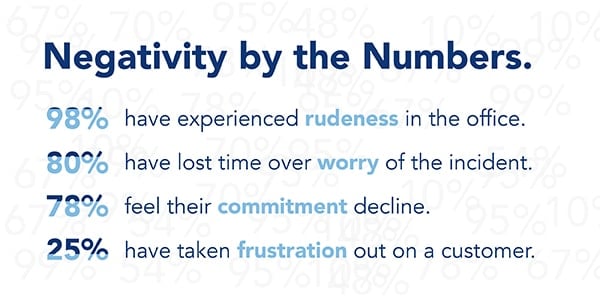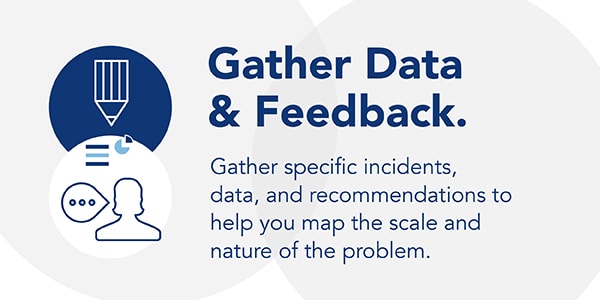- Recursos humanos
- Artículo
- Lectura de 6 minutos
- Last Updated: 09/16/2016
What is the Actual Cost of Workplace Negativity?

Table of Contents
On the surface, it's clear that workplace negativity can bring down your team. Spending time around unhappy colleagues who complain, are unmotivated, or who are difficult to interact with, creates stress and carries an emotional cost. Research is beginning to show that workplace negativity may adversely affect your company's bottom line as well. According to a recent study from the University of Michigan, negativity in the workplace leads to workers who are mentally fatigued, defensive, and less productive than their happier peers.
Understanding the Dynamics of Workplace Negativity
Negativity in the office happens from time to time. After all, our teams are comprised of fallible human beings. Client meetings may go poorly. Hard workers may get passed over for a promotion. Demanding bosses may create a stressful environment. But it's important to note the difference between a rational reaction to a specific trigger event or simply a bad day from systematic and endemic negativity.
A negative attitude can quickly overturn the positive attitude of a team or a company and become toxic. The Harvard Business Review reveals that 98 percent of workers have experienced rudeness or negativity in the office at some point in their careers.
The authors of the Harvard Business Review study go on to reveal that 80 percent of people who experience negativity lose time worrying about the incident, leading to nearly half of them not working as hard or spending less time working. Collaboration also suffers as workers try to avoid their aggressor. Seventy-eight percent feel their commitment to the organization decline. There are also real and immediate impacts: 25 percent had taken out their frustration on a customer and 12 percent had left their jobs. The effects range from insidious undermining of productivity and morale to the loss of key talent and damage to customer relationships.

Addressing Workplace Negativity
What should a manager do when they believe that they are working in a toxic culture, or are witnessing an escalating situation that's negatively affecting a team or worker?
Model ideal behavior: Toxic cultures often start at the top. Whether you're fighting a lack of engagement or trying to create more productive discourse when there are disagreements, identify the problem and model the behavior you want to see. Not only does that give your team something to emulate, but it builds your credibility when you discuss the issue.
Gather data and feedback: Don't simply rely on your impressions. Ask your direct reports and others in the organization about their perceptions. Gather specific incidents, data, and recommendations to help you map the scale and nature of the problem. Consider conducting your own internal study to understand how a negative culture affects your business. Not only can this help support the idea that it's important to address – but it provides you with a baseline to track future progress.

Invest in positivity throughout the hiring and managing process: Are you asking yourself whether the people you're hiring are prone to negativity, complaining or bad tempers in the workplace? Focusing on these issues during hiring, onboarding, training, and employee evaluations can help set the right tone for the positive culture you're trying to build.
Create constructive feedback loops: Giving your team feedback is an important part of changing behavior. Instead of focusing on the negative or attacking your team, ensure that all feedback is delivered in a constructive way. Provide an alternate model for approaching similar situations in the future. Watch for improvements and reinforce those by offering positive encouragement.
Workplace negativity may hurt your bottom line in multiple ways: decreased productivity, the loss of talent, and even customer relationships. However, focusing on this issue in a systematic way can help make it possible to root out negativity and create a more positive, happy, and productive culture that allows your team to thrive.
Tags







